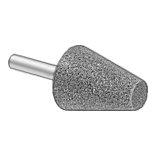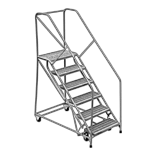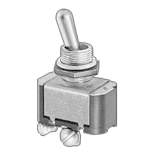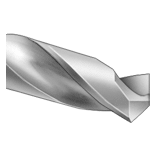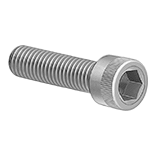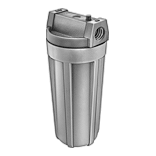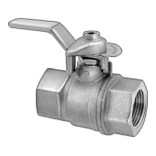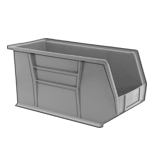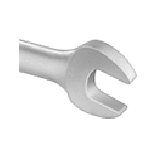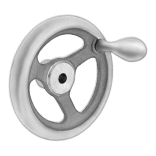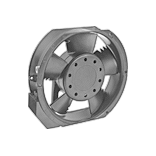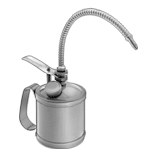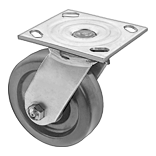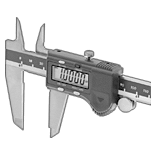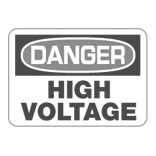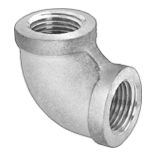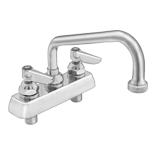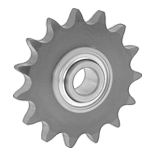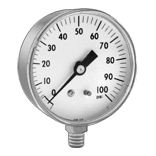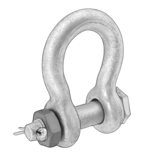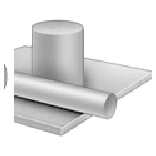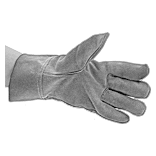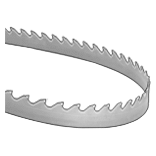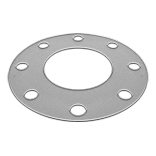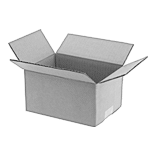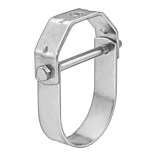Impact-Resistant ABS 3D Printer Filaments
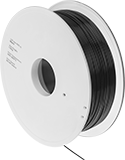 | |||
Bumps, scrapes, and falls won’t damage these tough ABS filaments. Known for their durability, they absorb impact without cracking or breaking, and won’t degrade when heated. Use them to print tool handles, storage cases, and other parts that are handled or dropped frequently. These filaments are a good place to start if you’re experimenting with printing impact-resistant parts.
Use with a fused filament fabrication (FFF) 3D printer. These filaments have a high melting point and must be printed onto a heated bed. Without it, parts will cool too quickly and warp. These filaments also release fumes as they are printed, so use an enclosed printer or a fume exhauster to ventilate them.
Carbon-fiber-filled ABS filaments make rigid parts that are difficult to bend and break. Their parts can also be threaded and machined more easily than ABS filaments without a filler. Fiberglass-filled ABS filaments make parts that are stronger and less likely to warp or shrink than ABS filaments without a filler. Carbon-fiber- and fiberglass-filled filaments are abrasive, so you should use them with an abrasion-resistant nozzle. They will wear out other nozzles.
Static-dissipative filaments make parts that protect equipment from electrostatic shocks by diverting electrostatic discharges in a controlled way. Use them to create tool handles, tote trays, enclosures, and other parts that are used near sensitive electronics. To adjust the surface resistivity of your printed part, change the temperature of your printer’s extruder. As the extruder’s temperature increases, the printed part’s resistivity will decrease.
Filaments rated UL 94 V-0 meet strict flammability standards. Use them to create holders, guards, housings, and other parts that protect sensitive, flammable equipment and machinery.
Tensile strength is the best measure of a filament's overall strength. Similar to the stress applied on a rope during a game of tug-of-war, it's the amount of pulling force a material can handle before breaking. A higher rating means a stronger filament. A tensile strength of 5,000 psi and above is considered good; 12,000 psi and above is excellent.
Maximum exposure temperature is the point at which a printed part will begin to deform. Above this temperature, your printed parts will start to lose structural integrity.
Spool | ||||||||||||
|---|---|---|---|---|---|---|---|---|---|---|---|---|
| Dia., mm | Printing Temp. | For Printer Bed Temp. | Tensile Strength | Surface Resistivity, ohms/sq. | Max. Exposure Temp. | For Min. Nozzle Dia., mm | Dia., mm | Dp., mm | Wt., g | Choose a Color | Each | |
ABS Plastic | ||||||||||||
| 1.75 | 220° to 240° C 428° to 464° F | 100° to 110° C 212° to 230° F | 6,090 psi (Good) | __ | 90° C 194° F | 0.25 | 195 | 75 | 1,000 | 00000000 | 000000 | |
| 2.85 | 220° to 240° C 428° to 464° F | 100° to 110° C 212° to 230° F | 6,090 psi (Good) | __ | 90° C 194° F | 0.25 | 195 | 75 | 1,000 | 00000000 | 00000 | |
Carbon-Fiber-Filled ABS Plastic | ||||||||||||
| 1.75 | 220° to 240° C 428° to 464° F | 100° to 110° C 212° to 230° F | 6,670 psi (Good) | __ | 76° C 169° F | 0.4 | 195 | 55 | 750 | Black | 00000000 | 00000 |
| 2.85 | 220° to 240° C 428° to 464° F | 100° to 110° C 212° to 230° F | 6,670 psi (Good) | __ | 76° C 169° F | 0.4 | 195 | 55 | 750 | Black | 00000000 | 00000 |
Fiberglass-Filled ABS Plastic | ||||||||||||
| 1.75 | 230° to 245° C 446° to 473° F | 95° to 110° C 203° to 230° F | 9,862 psi (Good) | __ | 89° C 192° F | 0.4 | 198 | 62 | 750 | Black | 00000000 | 00000 |
ABS Plastic—Static-Dissipative | ||||||||||||
| 1.75 | 220° to 240° C 428° to 464° F | 100° to 110° C 212° to 230° F | 8,410 psi (Good) | 107-109 | 97° C 207° F | 0.4 | 200 | 75 | 750 | Black | 0000000 | 000000 |
| 2.85 | 220° to 240° C 428° to 464° F | 100° to 110° C 212° to 230° F | 8,410 psi (Good) | 107-109 | 97° C 207° F | 0.4 | 200 | 75 | 750 | Black | 0000000 | 000000 |
ABS Plastic—UL 94 V-0 | ||||||||||||
| 1.75 | 220° to 240° C 428° to 464° F | 100° to 110° C 212° to 230° F | 6,520 psi (Good) | __ | 95° C 203° F | 0.4 | 200 | 75 | 750 | Black | 00000000 | 00000 |
| 2.85 | 220° to 240° C 428° to 464° F | 100° to 110° C 212° to 230° F | 6,520 psi (Good) | __ | 95° C 203° F | 0.4 | 200 | 75 | 750 | Black | 00000000 | 00000 |
